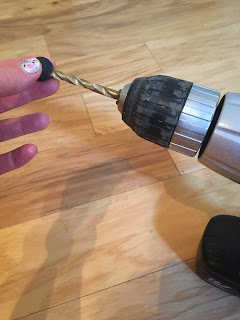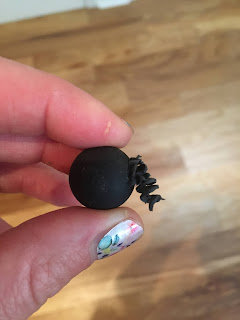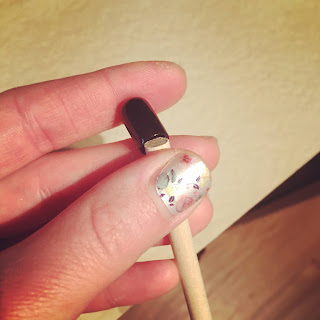Supplies:
• ¼” wooden dowels—pre-cut is nice, though 10” length may be more desirable than 12”. Also, precut doesn't leave a sticker residue behind like you get from buying the longer dowels at a home improvement store. Here's my first try with the lovely sticker residue. No thanks.


• Drill and 1/4” drill bit, may want to use a smaller bit first
• Glue gun or gorilla glue
• Bucket for disinfecting
Optional Supplies:
• Paint for handles so each class has its own color to grab.
• Vinyl end caps if you cut your own dowels or want a clean look.
Steps to Making Mallets:
Step 1 (optional): Paint the dowels. Though not necessary, they may hold up better when sanitizing if you paint them first. You can also cut them down to around 10" or 10 1/2" if you would like, but that is up to you and the tools you have available to you.

Step 3: Put a drop of hot glue inside paint ball. (Honestly, mine were snug even without the glue!)
Insert wooden dowel into paintball. It may take you a bit to find the best angle to do this, so practice doing it a few times without the glue. Once you do, it goes quickly.
Step 4 (optional): Use a drop of hot glue to add vinyl end cap.
Your final mallet will look like this:
For sanitizing, I'm going to make enough for all of my students in the morning to use their own set. I will sanitize during lunch and have enough for everyone in the afternoon to have their own pair. My current plan is to use this sterisol concentrate that I used to use for recorders and put it in buckets. The company has said you can use it until it becomes cloudy, but I'm going to change it out every week to be safe. I think each bottle makes 4 gallons, but can't remember for sure, so check that out for yourself. I expect it may dye the wooden handles red-ish or weaken the wood, so that may be another great reason to paint handles.
I hope this helps you keep Orff alive in your classroom this year. If you are looking for another way to teach your students about Orff without actually touching instruments (hello, distance learning!), check out this Orff booklet.
Catch you next time I have something noteworthy!
Your final mallet will look like this:
I based this mallet on one I had that came with an Orff instrument. You will see that if you don't cut the dowels, they will be a bit longer than the ones that come with the instruments. The head of the mallet will also be a bit smaller, but that will make it versatile enough to be used on everything from a glockenspiel to a bass xylophone. Also, I couldn't find a bigger paintball than 0.68 caliber, so this is the biggest size they have.
Frankly, I searched for a mallet head that would hold up and not fall apart when drilled (here's looking at you bouncy balls). Rubber paintballs are the most similar in composition to the original mallet and seem to be much more likely to hold up than anything else I could find. Wanna hear how they sound?
I hope this helps you keep Orff alive in your classroom this year. If you are looking for another way to teach your students about Orff without actually touching instruments (hello, distance learning!), check out this Orff booklet.
Catch you next time I have something noteworthy!








